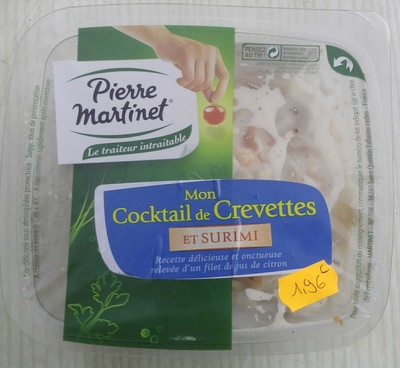Mon Cocktail de crevettes et Surimi - Pierre Martinet - 180 g
This product page is not complete. You can help to complete it by editing it and adding more data from the photos we have, or by taking more photos using the app for Android or iPhone/iPad. Thank you!
×
Barcode: 3281780083903 (EAN / EAN-13)
Quantity: 180 g
Packaging: Plastic, Fresh, Protective gas, Tray
Brands: Pierre Martinet
Categories: Meals, Fresh foods, Prepared salads, Fresh meals, Salads
Labels, certifications, awards:
Green Dot
Countries where sold: France






